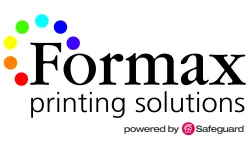Book Printing Lingo: -�Self Cover-� vs -�Plus Cover-�
Book Printing Lingo: "Self Cover" vs "Plus Cover"
In the printing industry, the term "Self Cover" refers to a book or booklet where the cover is made from the same paper as the interior pages. This means that there is no differentiation between the paper used for the cover and the paper used for the inside pages.
On the other hand, the term "Plus Cover" is used to describe a book or booklet that utilizes a different type of paper for its cover compared to the paper used for the interior pages. This creates a contrast or distinction between the cover and the inside pages, whether it's a difference in texture, weight, color, or finish.
Both "Self Cover" and "Plus Cover" options offer different visual and tactile experiences, and the choice between them depends on the desired aesthetic and design goals for the publication.
Of the two options, Plus Cover is vastly more popular. This is because most book projects require a cover that is thicker and/or glossier than the interior pages. A thick cover adds durability and a gloss cover adds vibrancy to the ink colors-�both of which enhance the quality and appeal of the book. Furthermore, the Plus Cover option can be used with any book binding style.
As you would expect, the benefit of a Self Cover book is its economy. Forgoing the thicker cover stock saves money because lighter paper costs less than heavier paper. Also, the entire booklet, pages and cover, can be produced in a single production run instead of two separate press runs for the pages and cover. The Self Cover option can also be used with any softcover binding style, though it is most commonly used in conjunction with the Saddle Stitch binding method.
Basically, any multi-page document that does not require the durability and longevity of a heavier cover can be produced as a Self Cover. For example, a brochure, price booklet or catalog that changes frequently is often made as a Self Cover document, as are many product instruction manuals that are intended to be referred to once and then filed or discarded.
Likewise, multi-page newsletters and bulletins are frequently created as Self Cover documents because they have a relatively short life and thus do not require a durable cover. Also, the lighter cover allows for easier folding to make them into a self-mailer or insert them into an envelope. In some cases, a lighter weight cover can even prevent a newsletter or bulletin from climbing into a higher postage bracket.
Writing the Specs-�
Here is an example of how to write the specifications for a "Plus Cover" saddle-stitched booklet (Diagram A).
This booklet is created from four folded sheets-�the inner three sheets form 12 pages and the outer sheet forms the cover.
Because the paper for the outer cover is different than the paper for the interior pages, the specs for the pages and cover must be listed separately-�
12-Page Plus Cover Booklet
Pages: 80# White Gloss Text, printed in color throughout
Cover: 100# White Gloss Cover, printed in color on both sides
Size: 8.5" x 11", Saddle-Stitched on 11" Dimension
Qty = 500
Now, here is an example of how to write the specifications for a "Self Cover" saddle-stitched booklet (Diagram B).
Just like the "Plus Cover" example above, this booklet is also created from four folded sheets.
However, since the paper for the outer cover is the same as the paper for the interior pages, there is no need to list the specs for the pages and cover separately-�
16-Page Self Cover Booklet
80# White Gloss Text, printed in color throughout
Size: 8.5" x 11", Saddle-Stitched on 11" Dimension
Qty = 500
If you have any questions about the "Self Cover" or "Plus Cover" book specifications, or have a question about any other book printing or binding topic, give Formax a call at 866-367-6221. Or, if you already know your specs and would like a quote, submit our easy quote request form. As always, we look forward to assisting with your next print project!
Take care! Rick



